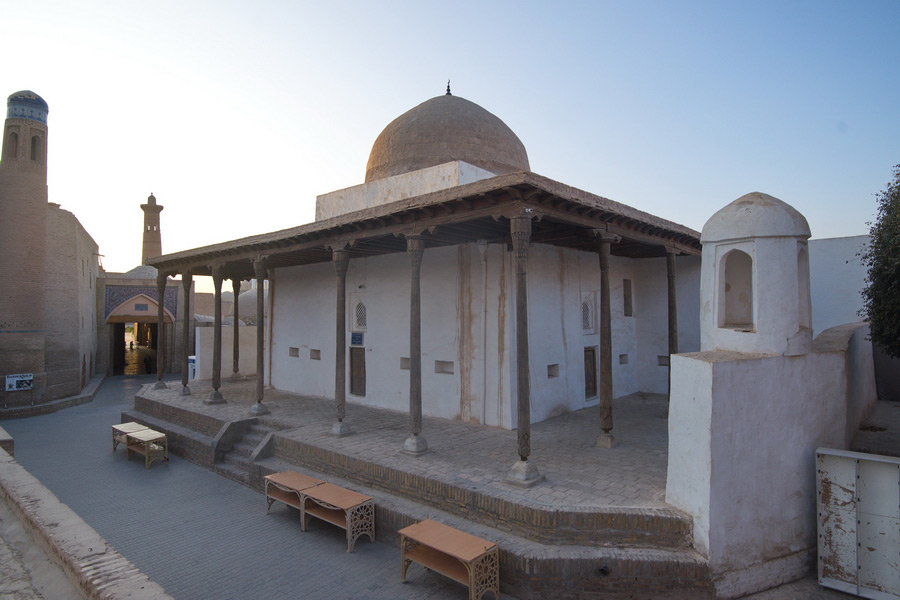Ak Mosque, Khiva

The Ak Mosque, also known as Ak Masjid or the White Mosque, is a prominent religious and architectural landmark nestled within the walls of the Ichan Kala fortress in the historic heart of Khiva. For centuries, it has served as a spiritual hub where locals gathered for daily prayers, and on Islamic holidays, it hosted communal worship attended by large numbers of the faithful. The Ak Mosque stands as a symbol of spiritual purity and clarity of thought - a model of architectural harmony, restraint, and elegance.
History
The Ak Mosque was established in 1657 by the order of Anusha Khan, a ruler of the Khiva Khanate from the Shibanid dynasty. However, the mosque was completed in the 19th century, during the rule of the Khongirad dynasty, which governed Khwarazm (the Khanate of Khiva) from 1763 to 1920. This era is considered a golden age for Khiva, marked by the construction of grand structures in the city center, including palaces, mosques, mausoleums, and madrasahs. Among them, the Ak Mosque held a central role, drawing worshippers from across the city for daily prayer.
Architecture
The Ak Mosque is located near the eastern Polvon gate, a grand entrance flanked by two tall watchtowers and featuring a peshtok (portal) adorned with mosaic tiles. The mosque’s own design is notably modest and refined. Its whitewashed walls and the balcony gallery on three sides - supported by intricately carved wooden columns - reflect a minimalist aesthetic. A large dome built from massive stone blocks crowns the structure. In the evening, soft lighting bathes the walls and dome, creating a serene and harmonious ambiance. The mosque features three entrances, symbolizing its openness to all worshippers and echoing the tradition of communal prayer gatherings. The main hall’s interior is similarly restrained, with minimal ornamentation - the only distinctive element being the wooden latticework over the windows.
The Ak Mosque exemplifies the balance between architectural simplicity and profound spiritual meaning. Today, it remains one of Khiva’s most significant sites and a revered place of worship. Visiting this sacred monument offers a deeper insight into Eastern culture and a direct connection to Uzbekistan’s centuries-old traditions.

